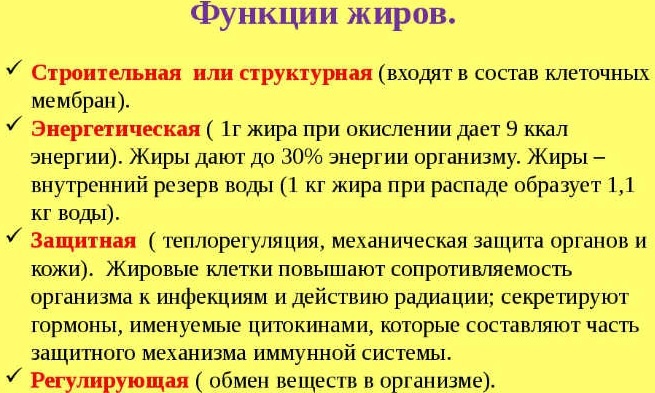Muscle pain throughout the body occurs for a number of reasons. The discomfort is characterized by a burning sensation, severe tingling, accompanied by flushing of the skin or minor disturbances in motor activity (stiffness). The exact cause of muscle pain is determined through diagnostic measures.
Record content:
-
1 Physiological causes of muscle pain throughout the body
- 1.1 After training
- 1.2 Hypodynamia
- 1.3 Flat feet
-
2 Pathological causes of muscle pain throughout the body and additional symptoms
- 2.1 Primary myalgia and myositis
- 2.2 Trauma
- 2.3 Neuromuscular diseases
- 2.4 Blood disease
- 2.5 Infectious diseases
- 2.6 Tumor formation
- 2.7 Autoimmune pathologies
- 2.8 Neurological disorders
- 2.9 Endocrine system diseases
- 2.10 Avitaminosis
- 2.11 Still's disease
- 2.12 Intoxication
- 2.13 Immunodeficiency
- 2.14 Rheumatoid arthritis
- 3 Why does acute muscle pain occur?
- 4 Chronic muscle pain
-
5 Diagnostics
- 5.1 Differentiation
- 5.2 Laboratory tests
- 5.3 Hardware research
-
6 Treatment methods
- 6.1 Means for emergency pain relief for severe muscle pain
- 6.2 Massage
- 6.3 Groups of drugs, names of drugs for external and internal use
- 6.4 Physiotherapy
- 7 Video about muscle pain throughout the body
Physiological causes of muscle pain throughout the body
Muscle pain throughout the body (the causes may be physiological) is often non-pathological in nature.
Discomfort occurs due to the influence on the musculoskeletal system of factors:
-
Improper nutrition. Together with food, the human body receives the optimal amount of vitamins and minerals necessary for its normal functioning. Deficiency of nutrients leads to impaired conduction within muscle fibers, the process of regeneration and metabolism is inhibited.

Muscle pain throughout the body can occur due to improper diet. - Weather dependence. Some people, especially the elderly, suffer from muscle pain when the weather changes.
- Childhood. In children, muscle pain occurs due to the division that occurs in the bone tissue pain. Appears with the rapid growth of the skeleton.
- Pregnancy. In the body of a pregnant woman, hormonal changes occur. Muscle pain can appear in the 2-3 semester with excessive exertion.
The physiological causes of muscle pain include:
- flat feet;
- hypodynamia;
- overvoltage.
After training
Muscle pain throughout the body (the cause can be diagnosed) occurs after prolonged exercise. Discomfort is also reported by people whose work activity is associated with physical activity. If the pain is not caused by injury, it is thought to be caused by accumulation of lactic acid.
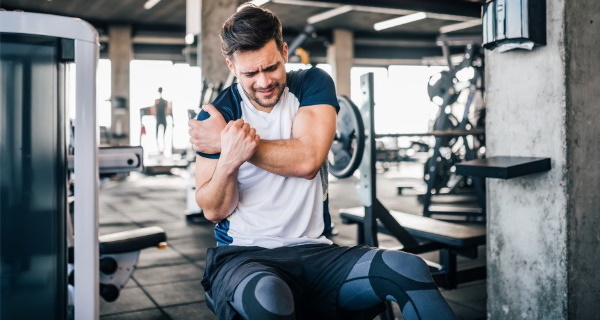
The product is formed as a result of metabolic processes taking place inside the muscle tissue.
The higher the intensity of the contractions, the faster the accumulation of lactic acid occurs, which causes a burning sensation. The substance is completely safe for the human body. Most often, pain caused by the presence of a large amount of lactic acid in the muscles goes away on its own. The blood flushes the substance out of the muscles.
When it enters the systemic circulation, muscle acid has a beneficial effect on the body, starting the process of regeneration of damaged tissues. Pain can be caused by microtrauma to smooth muscles. Discomfort manifests itself 24-48 hours after intense training. The malaise is called dizziness, the discomfort most often goes away on its own.
Hypodynamia
Lack of activity or physical inactivity occurs due to somatic, psychological and genetic diseases. Predisposing factors include overweight and lack of exercise. With physical inactivity, disruptions in the work of the musculoskeletal system are observed, the muscles lose their tone and become lethargic. A person feels tired, gets tired quickly.

With physical inactivity, in addition to muscle pain, the patient has increased bone fragility, which increases the risk of fractures. The patient's strength indicators are reduced, there is a violation of reflex-nervous connections, the functions of the spine and joints.
Flat feet
The arch of the foot acts as a shock absorber. With flat feet, the anatomy of this section is deformed, the load is unevenly distributed. At the initial stage of the formation of pathology, the patient notes swelling and pain in the muscles. Discomfort occurs against the background of damage to bones and ligaments. The edema that forms in the process compresses the rest of the foot.
Dystrophic changes lead to limitation of motor activity. The pain is localized not only in the area of the foot, but also in the hip and knee joints, and the lower leg.
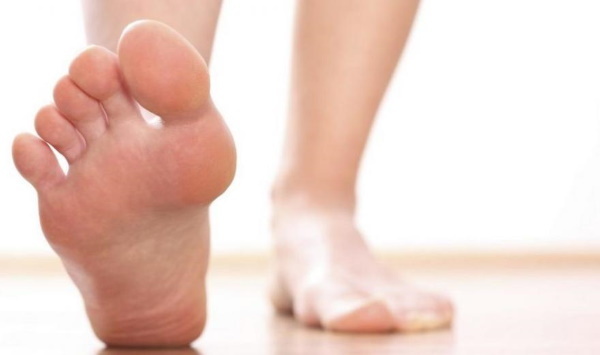
Patients often complain of discomfort in the spine or hip area. At the initial stage of flat feet, pain occurs rarely, mainly in the evening. As the disease progresses, the discomfort becomes more pronounced. The burning sensation goes to the lower back and entirely to the lower limb.
Pathological causes of muscle pain throughout the body and additional symptoms
Muscle pain throughout the body (the reasons are determined by a specialist) occurs in a number of diseases:
- arthritis of the rheumatoid type;
- immunodeficiency;
- severe poisoning;
- systemic pathologies of the inflammatory type (Still's disease);
- avitaminosis;
- endocrine system pathology;
- psychoneurotic disorders;
- autoimmune diseases;
- oncology;
- injuries, ruptures of connective tissue;
- pathology of infectious etiology;
- blood diseases;
- myositis, myalgia.
Muscle pain occurs against the background of pathologies that affect the central nervous system.
Primary myalgia and myositis
Myositis is a disease of inflammatory etiology that affects the muscles of the skeleton.
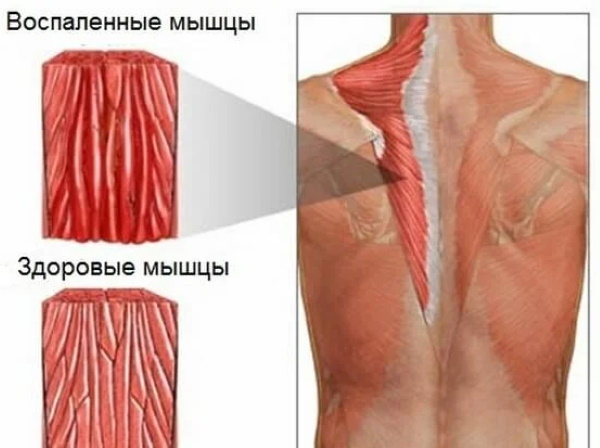
Depending on the location of localization, several main forms of pathology are distinguished:
- cervical;
- lumbar.
Myositis is characterized by severe pain in the muscle tissue. Discomfort increases with palpation or movement. The pain can be dull, aching or pulling. The patient has a decrease in strength indicators, weakness arises. In advanced cases, it is possible to develop local hyperemia (redness of the skin) and slight swelling.
Cervical myositis is manifested by aching or dull pain, sometimes radiating to the shoulder, temple or back of the head. The patient's movements are limited. Lumbar myositis occurs due to hypothermia, prolonged stay in an uncomfortable or incorrect posture.
The disease is characterized by aching or acute pain. When moving, the discomfort increases. Myalgia is defined as severe muscle pain. The cause of the development of pathology can be the hypertonicity of cells at rest or stress.
Associated symptoms include:
- swelling;
- convulsions;
- weakness;
- numbness of the limbs.
Patients complain of sleep disturbance, sweating and temperature fluctuations.
Trauma
If the integrity of the muscle tissue is violated, it is dissected in width. A cleft may form. If the rupture is provoked by trauma, then the risk of bleeding is quite high.

In this case, a hematoma forms under the skin. Excision is accompanied by a local increase in temperature and slight swelling. In severe cases, with extensive breakdown of muscle tissue, ischemic paralysis is formed.
Neuromuscular diseases
Neuromuscular diseases can be acquired and congenital.
Pathologies are classified depending on the localization of the lesions:
- spinal cord;
- synapse;
- peripheral nerves;
- skeletal muscle.
Diseases in this category include:
- myopathy;
- muscular dystrophy;
- myoplegia;
- myotonia.
In addition to pain, concomitant symptoms of the disease include:
- violation of respiratory and swallowing reflexes;
- diplopia;
- tingling sensation in the limbs;
- decreased tendon reflexes;
- numbness of tissues;
- involuntary muscle contractions;
- cramping;
- decrease in muscle volume.
With neuromuscular diseases, paresthesia may occur. Patients complain of impaired sensitivity. Most often, symptoms appear gradually, in the early stages of the disease it is quite difficult to diagnose.
Blood disease
In diseases of the blood, there is a so-called "vascular pain" affecting the veins and arteries. Most often, discomfort is localized in the area of the knee joint or slightly below it. When the limb is at rest, the pain subsides.

Most often, the burning sensation is noted in the evening. Patients complain of swelling and varicose veins. Cramps may occur when walking fast. Cold foot is considered a specific symptom of vascular pain. Painful attacks occur against the background of narrowing of the vascular lumen, blood ceases to flow into the muscles.
Spasm occurs in people suffering from:
- atherosclerosis;
- phlebitis and thrombophlebitis;
- arterial embolism;
- vein thrombosis.
Muscle pain is a common concern in people who have had a heart attack or stroke.
Infectious diseases
The development of infectious diseases is accompanied by migratory or wandering pain in the muscles. Most often, the discomfort is worse in the morning. Patients experience stiffness, a person gets tired quickly, and cramps occur when walking fast.
A concomitant symptom may include:
- temperature jumps;
- violation of the swallowing reflex;
- hyperemia of the skin, swelling.
A painful attack with pathologies of an infectious nature can last for several hours.
Tumor formation
The growth of malignant and benign tumors inside the body negatively affects the functioning of most internal systems. Muscle aches occur with oncology, discomfort does not have a clear localization.
The patient is worried about migratory pain, the process is accompanied by:
- apathy;

- weakness;
- a sharp decrease in weight;
- partial or complete refusal of food.
If a neoplasm of a benign and malignant nature is localized inside the muscle tissue, then the pain will gradually increase, from aching turning into acute. The person is deprived of sleep and ability to work.
Autoimmune pathologies
Autoimmune diseases characterized by muscle weakness and pain include polymyositis. The disease can lead to complete disability. Myositis affects symmetrical muscle groups and is diagnosed in people aged 40-65 and in children under 15 years of age.
Concomitant symptoms, in addition to pain, include:
- loss of body weight;
- rapid fatigue;
- heat;
- pain when swallowing;
- muscle weakness in the legs, thighs and arms.
Polymyositis can be accompanied by Raynaud's phenomenon: a person's fingers suddenly become numb. Muscle pain is migratory in nature. Most often, the lesion affects the muscle tissue in the center of the body.
Neurological disorders
Muscle pain throughout the body (the reasons should be identified by a specialist after a detailed examination of the patient) is one of the main symptoms of a neurological disorder. Neurosis occurs against the background of intense physical exertion, strong feelings and overwork. There is a pinching of the roots, impulses do not go well to the muscles and internal organs.
In addition to pain, manifestations of neurosis are considered:
- apathy;
- loss of appetite and sleep;

- psycho-emotional disorder (including frequent mood swings);
- rapid fatigue;
- general weakness;
- tremor;
- nervous tic;
- spasm of varying degrees of intensity.
Muscle pain in neurological disorders can be migratory.
Endocrine system diseases
By origin, endocrine myopathy is divided into 2 types: exogenous and endogenous. The lesion falls on the area of the hips, neck and shoulders. Pathologies that can provoke muscle weakness include thyrotoxicosis. Soreness with compaction of muscle tissue, convulsions are observed in patients suffering from Hoffmann's syndrome.
With damage to the parathyroid gland, in addition to pain, the patient has:
- Duck gait;
- stiffness;
- convulsions;
- fast fatiguability;
- weakness;
- decreased tendon reflexes.
In people with Itsenko-Cushing syndrome, amyotrophy of the pelvic and shoulder girdles can be diagnosed.
Avitaminosis
Avitaminosis most often occurs in winter and autumn. The condition is characterized by a deficiency of ascorbic acid and B vitamins. Muscle pain, weakness develops against the background of a lack of normal blood supply and nerve conduction.

Associated symptoms include:
- rash;
- mild nausea;
- apathy;
- irritability;
- decrease in power indicators.
The person feels a sharp weakness in the lower extremities. The ability to work decreases, after the load, there is a burning sensation, trembling and paresthesia (feeling of "goose bumps").
Still's disease
Pathology is accompanied by polyarthritis and fever. The temperature rises to 39-40 ° C. The pathology of infectious etiology is characterized by skin rashes. The rash is of an incoming nature, papules appear and disappear on their own.
Associated symptoms include:
- myalgia;
- arthralgia;
- damage to the lymphoreticular organs (including lymphadenitis);
- a sore throat;
- pericarditis or pleurisy.
At the initial stage of the disease, symptoms of bilateral pneumonia appear:
- temperature;
- dyspnea;
- cough.

On the background of prolonged antibiotic therapy, the symptoms do not disappear.
Intoxication
Severe intoxication can be triggered by the ingress of exogenous and endogenous compounds into the body. The victim experiences severe weakness and muscle pain most often in the back, lower and upper extremities. The patient's condition is rapidly deteriorating. The pain is migratory in nature, radiating to the temples, back of the head, fingers, knees and abdominal cavity.
Concomitant signs include dyspeptic disorders:
- diarrhea;
- vomiting;
- severe nausea;

- violation of the stool;
- pain in the epigastric region or side.
In severe cases, in the absence of timely assistance, the patient may fall into a coma.
Immunodeficiency
Immunodeficiency is understood as a decrease in the body's defense reactions to external and internal stimuli. In this state, a person experiences muscle pain and weakness, his joints ache, and his working capacity decreases. The spasm most often occurs in the lower limbs or in the elbow and knee joints.
In addition to weakness, symptoms of immunodeficiency include:
- inflammation and enlargement of the lymph nodes;
- fever;
- temperature jumps;
- rashes on the skin;
- labored breathing;
- violation of the swallowing reflex.
With a decrease in protective reactions, the risk of secondary bacterial and viral infections is quite high. The characteristic symptoms of immunodeficiency can persist for 3-6 months.
The temperature regularly rises to subfebrile values.
Rheumatoid arthritis
Rheumatoid arthritis is considered a disease of an autoimmune nature, which is characterized by damage to the joints and connective tissue. Aching pain is considered the main sign of the development of pathology. The disease is most often asymptomatic, symptoms appear after a few months, the joints of the fingers are deformed.
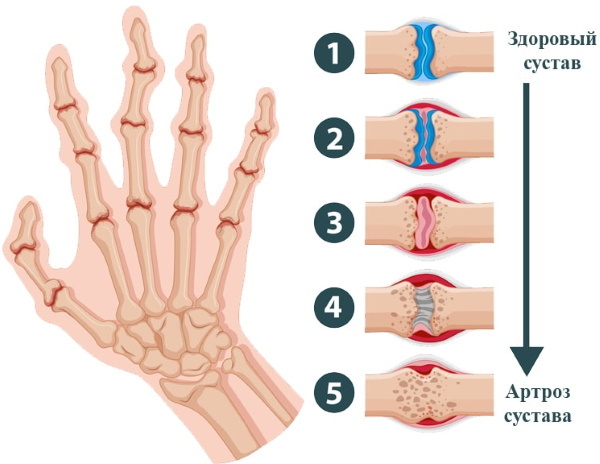
Symptoms of rheumatoid arthritis include:
- general weakness;
- rapid fatigue;
- violation of motor activity immediately after waking up;
- numbness of the toes and hands;
- swelling and joint pain.
With the defeat of the upper and lower extremities at the same time, the patient may experience disorders characteristic of poisoning (dyspepsia).
Why does acute muscle pain occur?
Acute pain most often occurs with injuries accompanied by rupture of connective tissue. The syndrome can also indicate the development of a serious medical condition such as meningitis or heart attack.
An urgent need to consult a doctor if acute muscle pain is accompanied by:
- high fever;
- muscle rigidity;
- a fit of seizures;
- progressive numbness of the limbs;
- partial or complete loss of vision;
- paralysis;
- shortness of breath;

- pain in the sternum radiating to the jaw, neck, shoulder.
Any changes in the patient's mental state, impaired concentration, sudden fainting spells are the reason for contacting the nearest medical institution.
Chronic muscle pain
Chronic pain occurs in the absence of adequate treatment for diseases accompanied by muscle weakness.
These include:
- myositis;
- arthritis;
- myalgia.
Against the background of constant discomfort, a person experiences weakness. The development of insomnia is possible. The patient feels depressed and overwhelmed. In places of localization of pain, swelling or hyperemia is possible. Motor activity is most often limited.
Diagnostics
Muscle pain throughout the body can be considered a clinical syndrome of a particular disease. The exact cause of its development is revealed through hardware studies and laboratory tests. After the diagnosis is made, the specialist proceeds to the selection of adequate drug therapy.
Differentiation
Differential diagnosis allows you to confirm or refute the specialist's assumption regarding a particular pathology. The attending physician carefully examines the patient, palpates the area of pain localization and listens to the patient's complaints.

Some diseases have a similar symptom complex, therefore, differentiation is carried out with the main conditions, which are accompanied by weakness and spasms.
Laboratory tests
To assess the general condition of the patient's body, the doctor may prescribe a blood test. If necessary, the patient also gives urine to exclude or confirm helminthiasis, vitamin deficiency, and poisoning as the cause of myalgia. A blood test for rheumatic factor allows you to find out if the pathology of connective tissues is progressing in the human body.
KLA is also assigned to a person if he has had such concomitant symptoms as:
- diarrhea;
- constipation;
- pain in the epigastric region;
- swelling of the joints;
- speech disorder;
- hardening of muscles.
If you suspect polymyositis, you need to donate blood to detect the activity of CPK, ASAT, ALAT.
Hardware research
To exclude or confirm the presence of seals on the muscle tissue, the patient is prescribed x-rays or MRI (magnetic resonance imaging). Patients with suspicion of the development of degenerative processes of the central nervous system, infections and growth of tumors inside soft tissues may be prescribed CT (computed tomography of the brain).

In a number of diseases, for example, polymyositis, symptoms of dysfunction of internal organs are observed. In this case, the patient is assigned an ECG, gastroscopy and ultrasound of the peritoneum.
Treatment methods
Treatment methods are selected individually, depending on the degree of intensity of muscle pain and the presence of accompanying a number of pathologies and symptoms. In case of severe pain, emergency pain relievers are used. The patient may be prescribed medications. Massage and physiotherapy are considered to be concomitant treatments.
Means for emergency pain relief for severe muscle pain
It is quite difficult to relieve acute pain without the help of medications. If discomfort occurs after a fall or other injury, then the patient must be given an anesthetic.
This category includes the following drugs:
- Ketoprofen;
- Larfix;
- Ksefokam;
- Ketalgin;
- Ketanov.
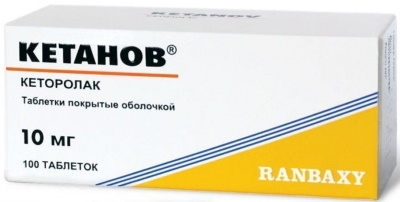
It must be remembered that the above drugs act for a short time. To prevent the pain from developing into chronic, you need to identify the exact cause of the discomfort.
Massage
Various massage techniques are effective for mild to moderate muscle pain. Experts recommend stretching your muscles regularly, after each exercise. Movements should be light, circular, slightly vibrating. It is important to control the force of pressing.
After a massage, blood flow to the affected area of muscle tissue will increase. So that the procedure does not bring discomfort to the patient, massage oil is used in the process.
Groups of drugs, names of drugs for external and internal use
The following categories of medicines can be included in the composition of drug therapy:
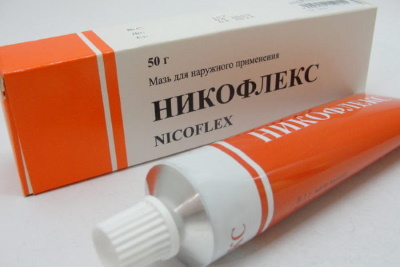
| Category | Name | Description |
| For external use | Nikoflex | A non-hormonal drug with a pronounced anti-inflammatory and analgesic effect. The composition contains ethyl nicotinate, capsaicin. |
| Voltaren | The gel has a local anesthetic and anti-inflammatory effect. The main component is diclofenac. | |
| Traumeel | The drug is of natural origin. The composition contains extracts of medicinal plants (calendula, echinacea). It has a warming and analgesic effect. | |
| For oral administration | Sulpirin | A drug with a pronounced analgesic effect. |
| Nimesulide | Non-steroidal medication with a pronounced anti-inflammatory and analgesic effect. | |
| Meloxicam | Analgesic, anti-inflammatory effect. | |
| For intramuscular injection | Dyclogen | Non-steroidal anti-inflammatory drug with analgesic effect. |
| Diclofenac | Anesthetic drug that can stop inflammation. | |
| Artrosilene | NSAIDs with a pronounced anti-inflammatory and analgesic effect. |
Before using any of the above medications, you should consult with a specialist.
Physiotherapy
Physiotherapeutic methods for treating myositis, myalgia, and arthritis include ultraviolet irradiation, amplipulse therapy, electrophoresis and phonophoresis.

The procedures, according to the degree of effectiveness, are selected by the attending physician, depending on the intensity of pain attacks. For moderate spasms, mud baths and paraffin heating are effective.
Muscle pain throughout the body can indicate the development of serious medical conditions. The exact cause is determined in a hospital setting by a general practitioner. It is not recommended to independently select medications or practice warming up without the permission of a specialist.
Video about muscle pain throughout the body
The reasons why the muscles in the body ache:


